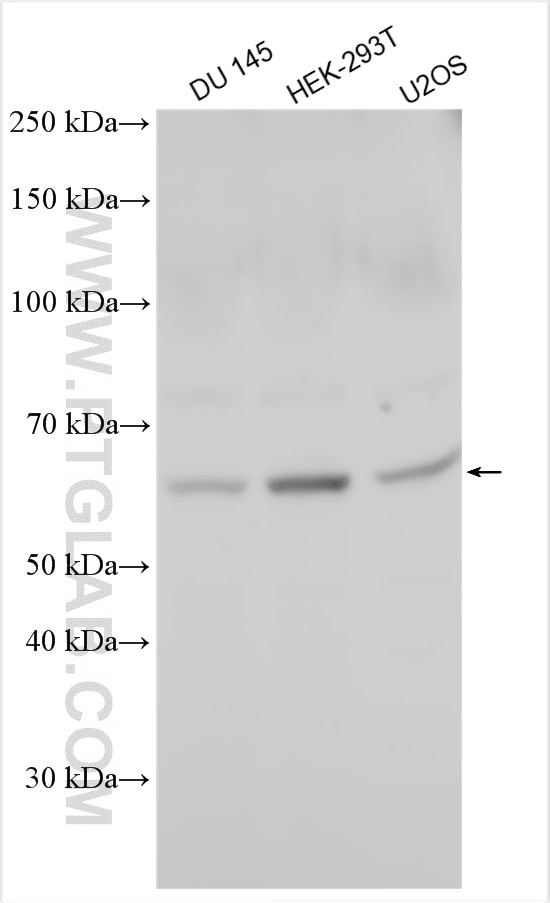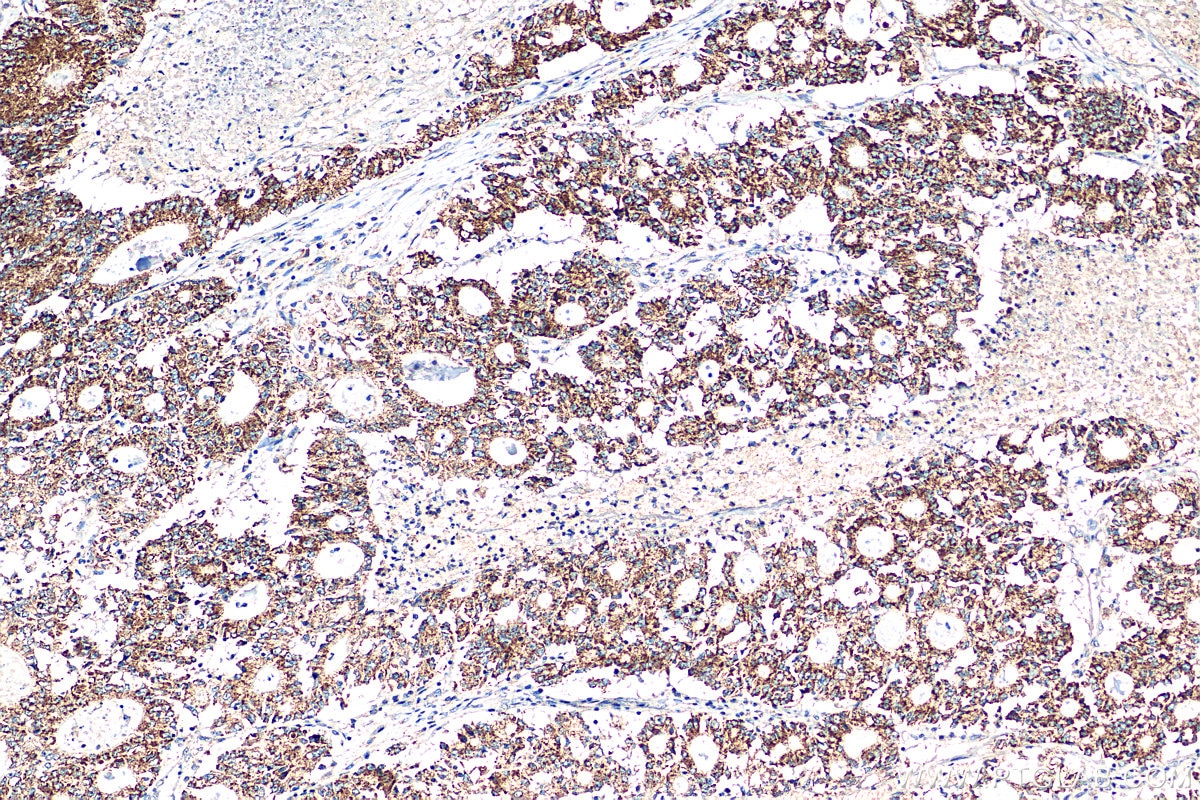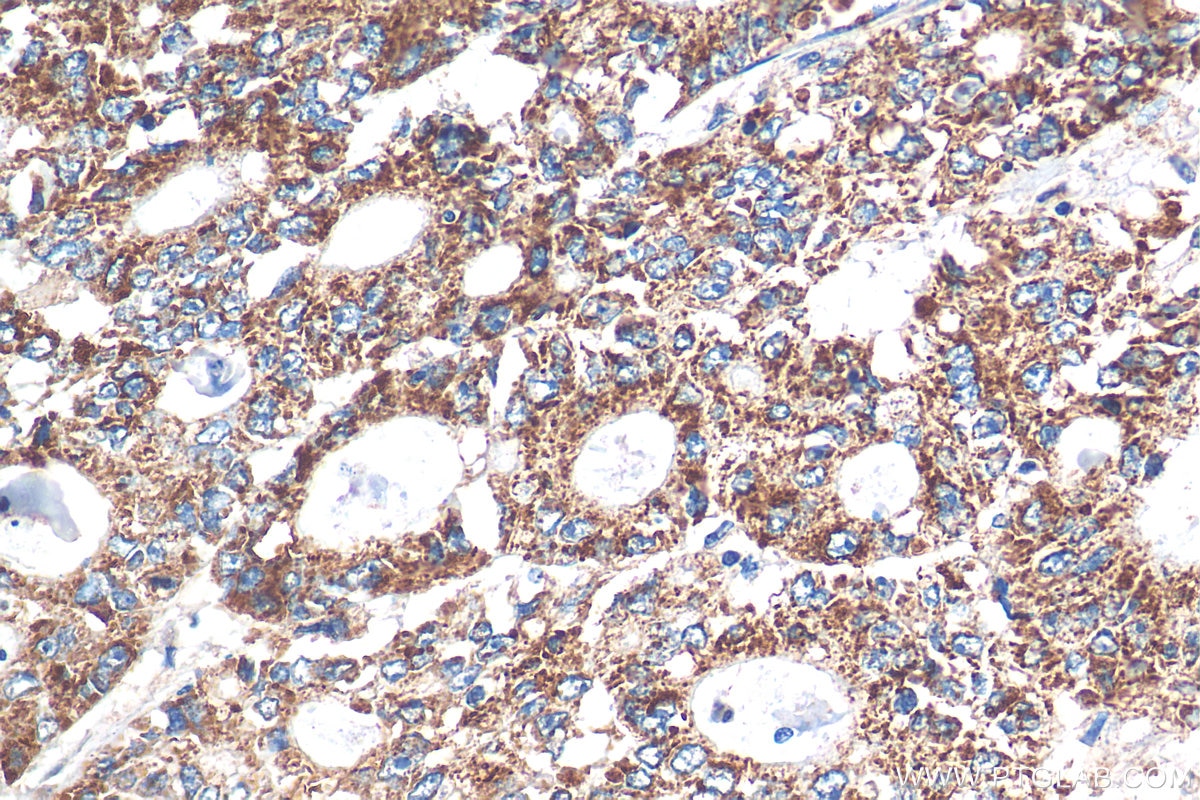STEAP2 Polyklonaler Antikörper
STEAP2 Polyklonal Antikörper für WB, IHC, ELISA
Wirt / Isotyp
Kaninchen / IgG
Getestete Reaktivität
human
Anwendung
WB, IHC, ELISA
Konjugation
Unkonjugiert
Kat-Nr. : 24804-1-AP
Synonyme
Geprüfte Anwendungen
| Erfolgreiche Detektion in WB | DU 145-Zellen, HEK-293T-Zellen, U2OS-Zellen |
| Erfolgreiche Detektion in IHC | humanes Kolonkarzinomgewebe Hinweis: Antigendemaskierung mit TE-Puffer pH 9,0 empfohlen. (*) Wahlweise kann die Antigendemaskierung auch mit Citratpuffer pH 6,0 erfolgen. |
Empfohlene Verdünnung
| Anwendung | Verdünnung |
|---|---|
| Western Blot (WB) | WB : 1:800-1:1000 |
| Immunhistochemie (IHC) | IHC : 1:50-1:500 |
| It is recommended that this reagent should be titrated in each testing system to obtain optimal results. | |
| Sample-dependent, check data in validation data gallery | |
Produktinformation
24804-1-AP bindet in WB, IHC, ELISA STEAP2 und zeigt Reaktivität mit human
| Getestete Reaktivität | human |
| Wirt / Isotyp | Kaninchen / IgG |
| Klonalität | Polyklonal |
| Typ | Antikörper |
| Immunogen | STEAP2 fusion protein Ag20293 |
| Vollständiger Name | six transmembrane epithelial antigen of the prostate 2 |
| Berechnetes Molekulargewicht | 490 aa, 56 kDa |
| Beobachtetes Molekulargewicht | 56 kDa |
| GenBank-Zugangsnummer | BC148824 |
| Gene symbol | STEAP2 |
| Gene ID (NCBI) | 261729 |
| Konjugation | Unkonjugiert |
| Form | Liquid |
| Reinigungsmethode | Antigen-Affinitätsreinigung |
| Lagerungspuffer | PBS with 0.02% sodium azide and 50% glycerol |
| Lagerungsbedingungen | Bei -20°C lagern. Nach dem Versand ein Jahr lang stabil Aliquotieren ist bei -20oC Lagerung nicht notwendig. 20ul Größen enthalten 0,1% BSA. |
Hintergrundinformationen
STEAP2, also named as PCANAP1 and STAMP1, belongs to the STEAP family. It is a metalloreductase that has the ability to reduce both Fe3+ to Fe2+ and Cu2+ to Cu1+. STEAP2 uses NAD+ as acceptor.
Protokolle
| PRODUKTSPEZIFISCHE PROTOKOLLE | |
|---|---|
| WB protocol for STEAP2 antibody 24804-1-AP | Protokoll herunterladen |
| IHC protocol for STEAP2 antibody 24804-1-AP | Protokoll herunterladenl |
| STANDARD-PROTOKOLLE | |
|---|---|
| Klicken Sie hier, um unsere Standardprotokolle anzuzeigen |




